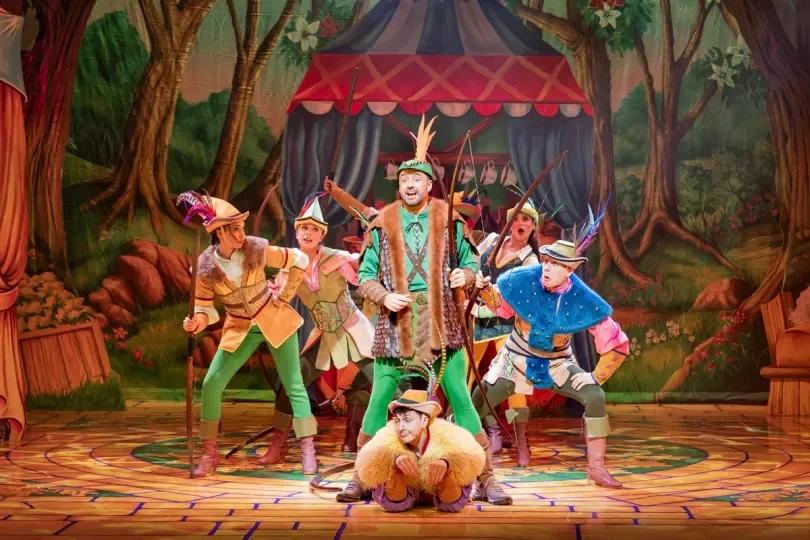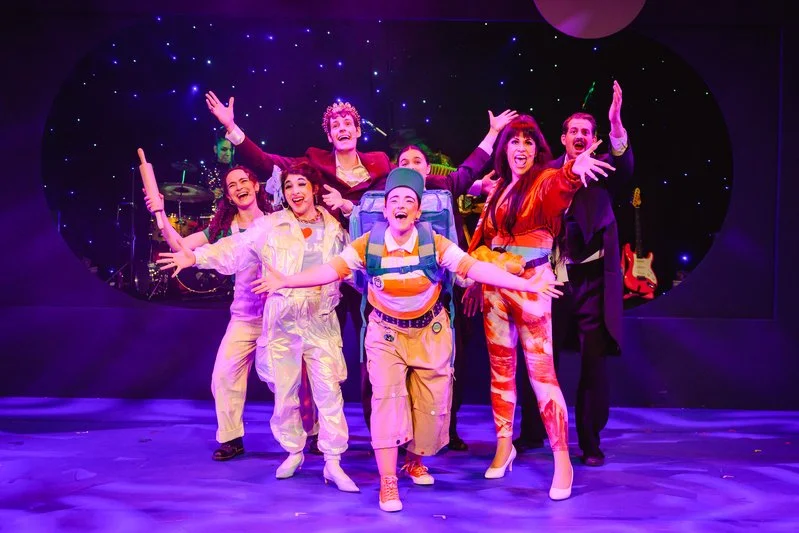La Manékine by La Pendue, Barbican Theatre Review
Photo by La Monde d’Aurore.
Written by Cathie for Theatre and Tonic
Disclaimer: Gifted tickets in exchange for an honest review
For the Barbican’s 2025 MimeLondon Festival (14th January to 1st February) opening show, we are treated to the gothic folktale of La Manèkine, or the girl without hands. Created by French company La Pendue we see this very dark Grimms folktale retold using a mixture of song, puppetry and some brilliant practical effects.
The story of La Manèkine is not as well known in the UK as it is in Europe due to it being considered one of the darkest of the collected Grimms tales. It unfolds with the tale of a Miller who, in exchange for abundant wealth, unwittingly sells his daughter La Manèkine to the Devil. Like many stories, she is able to avoid being taken because her hands are free of sin. However, as punishment for defeating him, the Devil orders her father to cut off her hands. She then runs away and the rest of this unusual fairytale unfolds with several bumps on its way to an eventual happy ever after. Like many old tales, it has a strong moral message to tell, with the focus being women’s identity and independence. La Manèkine is mutilated, threatened and harmed by those who wish to use her, including in this version her father being the one to cut off her hands instead of the Devil, therefore showcasing how often that society teaches us to rely on can cause us immense harm through their follies and flaws. With plenty of divine intervention sprinkled throughout, La Manèkine remains the heroine and triumphs due to her dedication to God and remaining pure of heart despite temptation and threats to suffer. As with many abuse survivors, she runs away from her abusers at the first opportunity, healing away from their toxicity and her independence and strength of spirit remain clear throughout.
The atmosphere of this show is eerie and somewhat ethereal. Although the story is clear there is a certain level of magic and uncertainty in the air as you watch carefully to see what happens next. La Pendue is a French company and therefore the story is narrated and performed entirely in French, fear not if you cannot recall more than a Bonjour from your ancient school days as behind the bare stage is a large screen which supplies English subtitles to every word spoken. This large screen also provides stark black and white images to add depth and clarity to various plot points. These images both invoke much empathy and sorrow for these characters’ plights and are so stylistically done I would not have been surprised if they formed part of the Barbican’s artwork afterwards. The clever switches between the different mediums to tell the story keep the pace fast and powerful.
La Pendue is formed by the dynamic duo Estelle Charlier and Martin Kaspar Orkestar. Charlier is the puppet master and uses a dozen puppets of various sizes to retell the story. She is light and elegant in her movements and gives each character a unique flair. When not using puppets she herself becomes the characters with a variety of masks, with ingenious forms of having the characters communicate with each other, including a hilarious conversation between the hapless but good natured king and La Manèkine. When not dancing puppets around the stage she also sings in conjunction with Orkestar’s multitude of instruments in portraying key moments of the story including the first meeting and eventual reunion of the king and La Manèkine. Their song invokes much empathy and pathos while making the characters seem layered and human in a very short time. Charlier’s final role is that of the king’s gardener, who with several hilarious breaks in the fourth wall, narrates and explains the tale to the delight and bemusement of the audience. This is my favourite role of hers and brings much needed levity to the bleaker moments of this tale. In contrast to Charlier, when Orkestar is not playing what seems to be four instruments simultaneously throughout the entire show, he also acts out key moments as both the miller and the king, using a variety of eerie masks. They work fabulously well together and really bring the folk magic alive.
With a short running time of roughly 65 minutes, the storyline is fast-paced and filled with plenty of wit and wonder. The four acts flow seamlessly into each other and there is the perfect balance of action-based plot points and uncovering facets of the characters. This would be an excellent show to introduce your older teenager to alternative forms of theatre or if you want to explore a new kind of theatrical experience. If you are looking for a show filled with wonder, whimsy and some truly excellent practical effects then I highly recommend this show for you.
★ ★ ★ ★ ★














